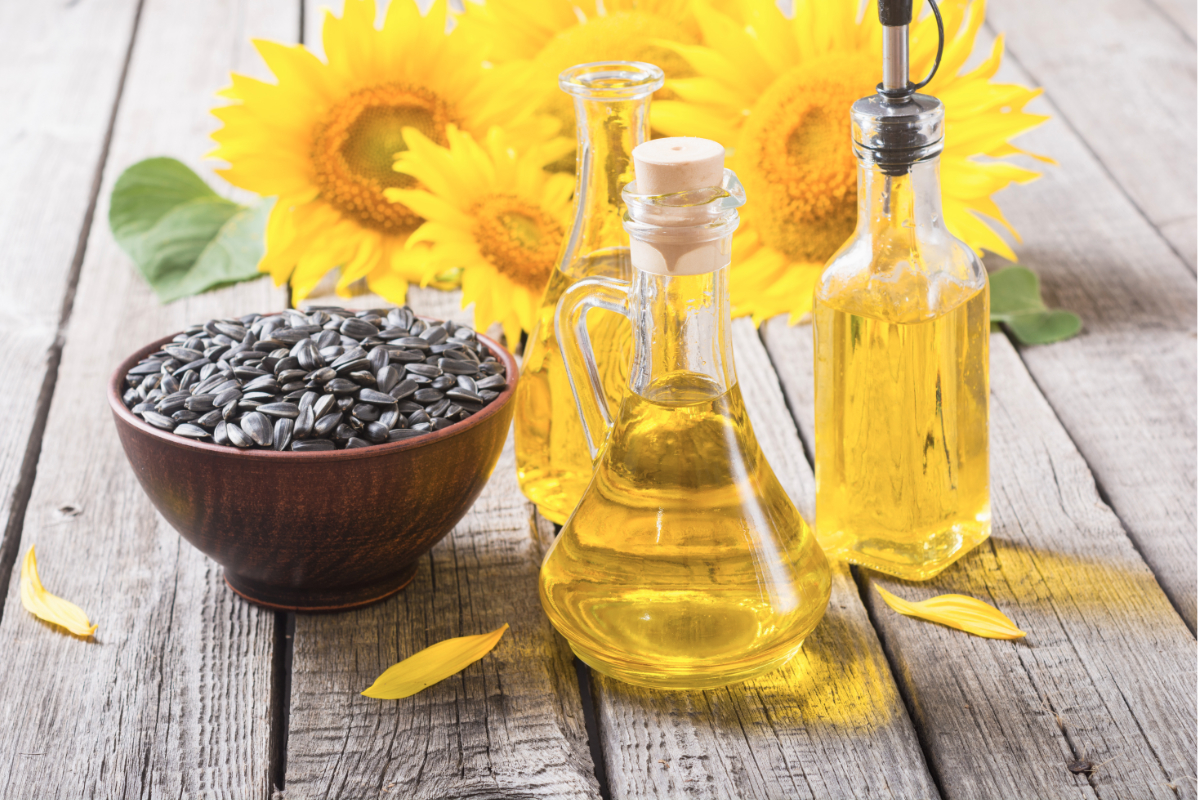KANSAS CITY — High-oleic oils already come with functional benefits. They are frying oils with extended shelf life, and they extend the shelf life of packaged snacks and baked foods. Now, the oils have a proven health benefit in a qualified health claim, a regulation that gives food and beverage companies more reason to use high-oleic oils sourced from soybeans, canola, olives and sunflowers.
The U.S. Food and Drug Administration last November said credible evidence supports a qualified health claim that consuming oleic acid in edible oils may reduce the risk of coronary heart disease, provided the edible oils contain at least 70% of oleic acid per serving.
The F.D.A. listed two acceptable qualified health claims:
- “Supportive but not conclusive scientific evidence suggests that daily consumption of about 1½ tablespoons (20 grams) of oils containing high levels of oleic acid, when replaced for fats and oils higher in saturated fat, may reduce the risk of coronary heart disease. To achieve this possible benefit, oleic acid-containing oils should not increase the total number of calories you eat in a day. One serving of [x] oil provides [x] grams of oleic acid (which is [x] grams of monounsaturated fatty acid).”
- "Supportive but not conclusive scientific evidence suggests that daily consumption of about 1½ tablespoons (20 grams) of oils containing high levels of oleic acid, may reduce the risk of coronary heart disease. To achieve this possible benefit, oleic acid-containing oils should replace fats and oils higher in saturated fat and not increase the total number of calories you eat in a day. One serving of [x] oil provides [x] grams of oleic acid (which is [x] grams of monounsaturated fatty acid).”
High-oleic content often is associated with olive oils, which is evident in the popularity of the Mediterranean Diet, said Rick Cummisford, quality controls director for Columbus Vegetable Oils, Des Plaines, Ill.
“The fat in olive oil contains approximately 70% oleic acid, which by incorporating 1½ tablespoons of these oils into one’s diet can reduce the risk of coronary heart disease,” he said. “What many people don’t know is that there are numerous other oils that also have a very high oleic acid content. These include varieties of sunflower, safflower, canola, soybean, avocado, almond, and hazelnut oils. All things considered, it should be relatively easy to incorporate an oil with high-oleic content into one’s diet.”
Oil products from Columbus Vegetable Oils come in many forms, and their use is dependent on the application, he said.
“We can customize products to meet a particular labeling, nutritional or functional need using the extensive oils that are available in the industry,” he said.
 Companies using the qualified health claim for oleic acid need to make it clear that the high-oleic oil is replacing fats and oils higher in saturated fat and do not increase the total number of calories, said Frank Flider, a consultant for Qualisoy, a third-party collaboration among the soybean industry.
Companies using the qualified health claim for oleic acid need to make it clear that the high-oleic oil is replacing fats and oils higher in saturated fat and do not increase the total number of calories, said Frank Flider, a consultant for Qualisoy, a third-party collaboration among the soybean industry.
“There are also guidelines on calories and salt that would limit its use,” he said. “The claim is best used on products containing a very high amount of oil to begin with, such as bottled cooking oils and salad dressings.”
Acreage is increasing for high-oleic soybeans. The soybean industry expects potential use of high-oleic soybean oil (over 70% oleic) of 1 billion lbs by 2023 and 9 billion lbs within the next decade, Mr. Flider said.
The initial uses of high-oleic soybean oil should focus on three areas, he said. In food service, it will offer longer fry life. In consumer packaged goods, delicately flavored food and foods requiring a long shelf life should derive benefits from the high-oleic soybean oil. Liquid coffee creamers and packaged snack foods are two examples of products that may benefit from increased functional stability. Finally, high-oleic soybean oil shortenings used for baking, frying, icings and puff pastries have the same functionality, stability, flavor and sensory properties formerly experienced with partially hydrogenated oil shortenings, which no longer qualify for the F.D.A.’s Generally Recognized As Safe (GRAS) status.
Calyxt, Inc., Roseville, Minn., is increasing supply of non-G.M.O. high-oleic soybean oil. Calyxt is in negotiations with three food companies interested in using the oil, which is about 80% oleic acid, said Manoj Sahoo, chief commercial officer for Calyxt. Smaller companies might be quicker to innovate and use the oil and the qualified health claim, he said.
“We have been heartened by the speed at which the smaller brands make decisions, and also it drives competitive reaction for the larger brands,” he said.
Potential applications for the Calyxt oil include cereal, nut butters, salad dressings, baked foods, non-dairy creamers and meat analogs, he said.
Calyxt sells soybean seeds to growers and then buys back the soybeans at a premium price. This year Calyxt has contracted with more than 100 farmers to grow over 34,000 acres of the high-oleic soybeans, which doubles the 17,000 acres planted in 2018. The company is working with farmers in North Dakota, South Dakota, Iowa, Nebraska and Minnesota.
“We are pleased that growers are seeing the value of planting Calyxt high-oleic soybeans,” said James A. Blome, chief executive officer of Calyxt. “Not only are they receiving better revenues from additional premiums, but we have expanded seed company purchasing options and allowed them to be closer to the consumer through our identity-preserved program. Those benefits position Calyxt as a strong partner for other global food brands that are looking to increase sustainability and traceability.”
Calyxt plans to introduce two to four additional high-oleic soybean varieties in 2020, which should expand the growing area geographically, Mr. Sahoo said.
 Healthy Food Ingredients, Fargo, N.D., offers high-oleic canola oil and high-oleic sunflower oil that are Non-GMO Project verified, as well as certified organic high-oleic sunflower oil, said Jennifer Tesch, chief marketing officer. Potential applications are snack foods, baked foods and coatings.
Healthy Food Ingredients, Fargo, N.D., offers high-oleic canola oil and high-oleic sunflower oil that are Non-GMO Project verified, as well as certified organic high-oleic sunflower oil, said Jennifer Tesch, chief marketing officer. Potential applications are snack foods, baked foods and coatings.
Being expeller-pressed is another marketing advantage for the oils.
“With demand for healthier, clean label increasing, expeller-pressed oils fit well into these trending categories,” Ms. Tesch said.
Stratas Foods, Memphis, Tenn., offers several high-oleic oils: Trisun high-oleic sunflower oil, high-oleic canola oil and Frymax Soy Supreme frying oil.
“The type of high-oleic edible oil’s contribution to a finished food’s organoleptic properties are influenced by the oil’s overall fatty acid composition as well as minor component levels such as tocopherols and phytosterols,” said Roger Daniels, vice-president, research and development and innovation for Stratas Foods. “For food applications in which a traditional fried flavor is desired, a high-oleic soybean oil is a good option due to the linolenic acid content. Food applications requiring a clean oil to allow the flavor of the food product to come through benefit from a high-oleic soybean oil. High-oleic canola oil offers a characteristic flavor that promotes savory characteristics of fried foods in a fashion analogous to high-oleic soybean oil.”
He said the qualified health claim for high-oleic acid could work in several applications: a spray oil for cereal-based products, crackers, nuts and raisins; light-duty frying applications such as pan-frying chicken; salad oil applications such as a base oil for dressings, sauces and mayonnaise-type products; and an ingredient in baked foods that require a nominal amount of liquid oil.
Oleic acid is found naturally in numerous food sources, including edible oils, meat (such as beef, chicken, and pork), cheese, nuts, sunflower seeds, eggs, pasta, milk, olives and avocados, according to the F.D.A. TerraVia Holdings, Inc. originally petitioned the F.D.A. for an oleic acid health claim in a letter dated Oct. 27, 2016. Corbion nv, Amsterdam, The Netherlands, later bought TerraVia, and it now is part of the Corbion Biotech business.
Corbion offers several ways to assist formulators in working with healthier oils.
“Bakers work hard to give their customers the same enjoyable eating experience every time, but minor changes in formulations can have major impacts on product quality and functionality,” said Jim Doucet, manager of emulsifier technology at Corbion and based in Lenexa, Kas. “To make it easier for bakers to incorporate fats and oils that meet the new qualified health claims, we offer a variety of solutions that help maintain product quality, freshness and integrity. For example, when combining a healthier unsaturated oil with the binding capability and accelerated crystallization of Trancendim, our high-diglyceride solution, bakers get a more consistent structure, flavor and texture than they otherwise would. The solution also helps lower saturated fat levels and eliminate hydrogenation and palm oil.”




